Content Marketing vs. Copywriting: Differences With Examples
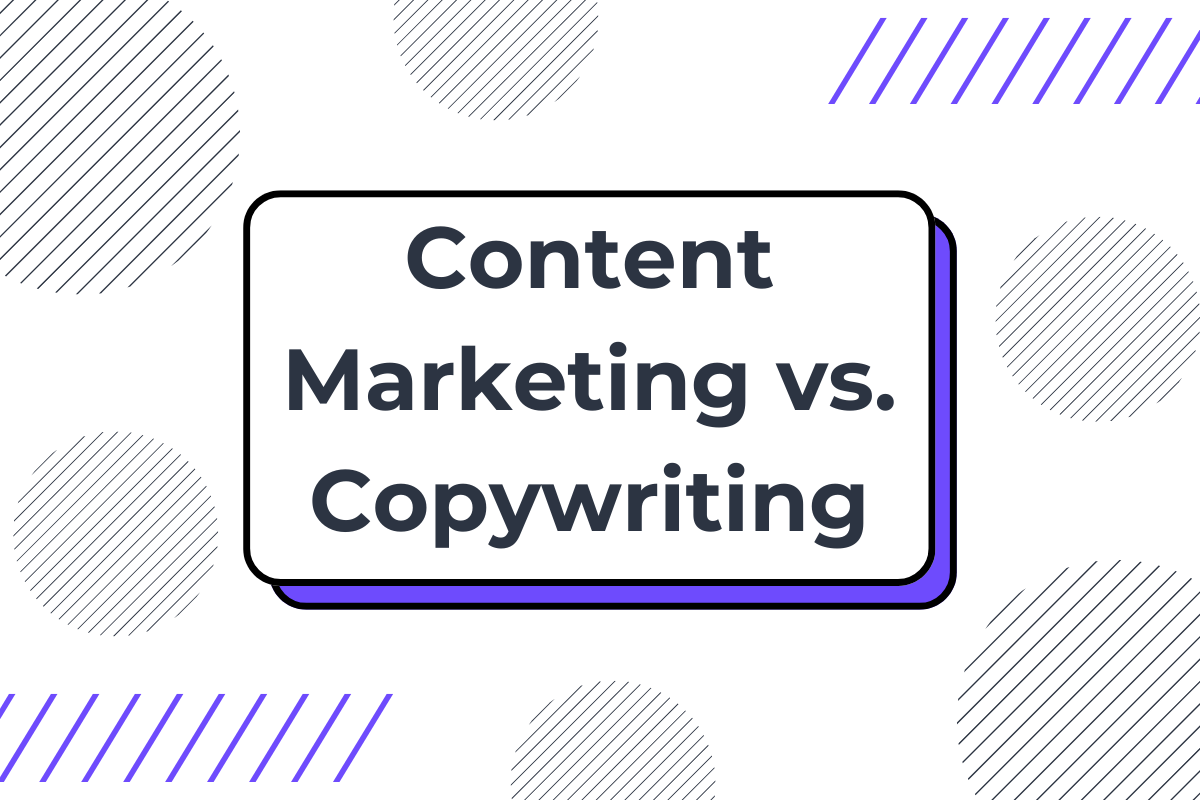
Content Marketing or Copywriting…
Aren’t they the same thing?
While both might seem similar, the truth is there are many differences between them. And knowing about it is essential because it can cost you time and a lot of opportunities.
Each one serves a different purpose in your marketing strategy.
Some businesses need content marketing. Others need copywriting. Many need both—but at the right time.
Let’s dive in and break down the difference between content marketing vs. copywriting and find the right one for your goals.
What Is Content Marketing?
Content marketing includes everything from blog posts and social media content to newsletters. It includes any form of online content that helps you in marketing and increasing brand awareness.
It builds lasting relationships with your audience through valuable information. It helps people solve problems while positioning your brand as an industry expert.
The content marketing approach focuses on creating educational resources that attract and nurture potential customers. Your blog posts, guides, videos, and podcasts serve as digital assets that continue to bring value long after publication.
For example, Microsoft's Azure Blog publishes detailed technical guides that help developers use cloud services effectively. These articles rank well in search results and bring consistent traffic.

Content marketing success takes time but delivers lasting results.
Now that you understand content marketing's long-term approach, let's look at its counterpart—copywriting—and how it drives immediate results.
What Is Copywriting?
Copywriting is any content that’s meant to drive immediate action through persuasive messaging. It can be an ad, a blog post, a landing page, or an email copy.
The main goal of copywriting is to connect with your audience's current needs and motivate them to take specific steps—whether that's signing up for a trial, making a purchase, or requesting more information.
Professional copywriters focus on creating high-impact messages for landing pages, email campaigns, product descriptions, and advertisements. They understand customer psychology and use it to craft compelling calls to action.
Take Sony product pages, for example. They are clean, and concise, and the copy emphasizes benefits over features for their headphones or any product releases, immediately connecting with the reader's needs.
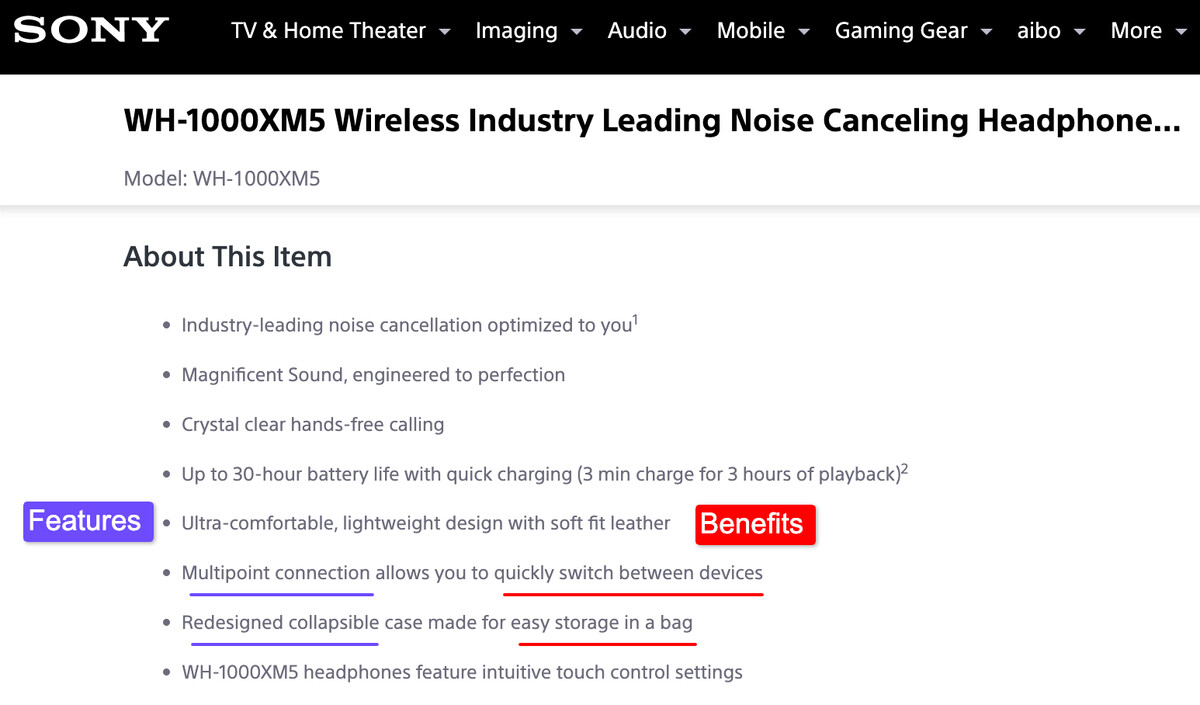
Now that you’ve got a brief overview of both content marketing and copywriting, let’s see what’s exactly the difference between them.
What Is The Difference Between Content Marketing And Copywriting?
| Aspect | Content Marketing | Copywriting |
|---|---|---|
| Purpose | Educate and inform | Sell and persuade |
| Timeline | 6-12 months | 24-72 hours |
| ROI Measurement | Traffic, leads, authority | Sales, conversions, revenue |
| Format | Long-form content | Short, persuasive copy |
| Cost | $200-500 per piece | $100-300 per page |
| Audience | Research phase | Ready to buy |
Let’s dive in and compare content marketing and copywriting side-by-side so that you can choose the right one for your goals.
1. Purpose And Goals
Content marketing aims to educate and build trust with your audience. It focuses on solving problems and providing valuable information that helps readers make informed decisions. The goal is to establish your brand as an authority in your industry.
Copywriting focuses on persuasion and immediate action. It aims to convert readers into customers through compelling messages that highlight benefits and create urgency. The primary goal is to drive sales and conversions.
2. Timeline And Results
Content marketing takes 6-12 months to show significant results. Your blog posts and guides will gradually attract more organic traffic and leads as they gain authority in search engines. Companies see a noticeable increase in organic traffic after 6 months of consistent content marketing.
Copywriting delivers results much faster. A well-written sales page or email campaign can generate sales within 24-48 hours. Businesses often see a 10-15% boost in conversion rates immediately after implementing professional copy.
3. Content Length And Format
Content marketing pieces need more depth to provide real value to your readers. A typical blog post should run between 1,500-2,500 words to cover topics thoroughly.
For example, ActiveCampaign’s email marketing guides dive deep into specific topics with examples, screenshots, and step-by-step instructions. Comprehensive guides often stretch to 2000-3,000 words or more to cover all user questions.
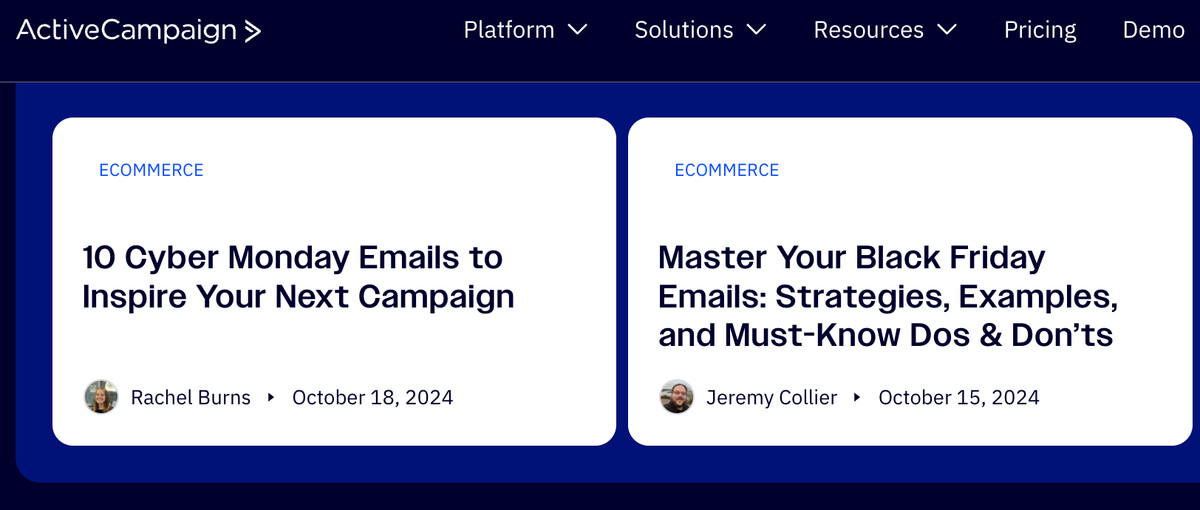
Copywriting takes a different approach. Your landing pages only need 300-500 words to make an impact.
For example, look at Squarespace’s homepage—short, punchy sentences tell you exactly what the product does and why you need it.
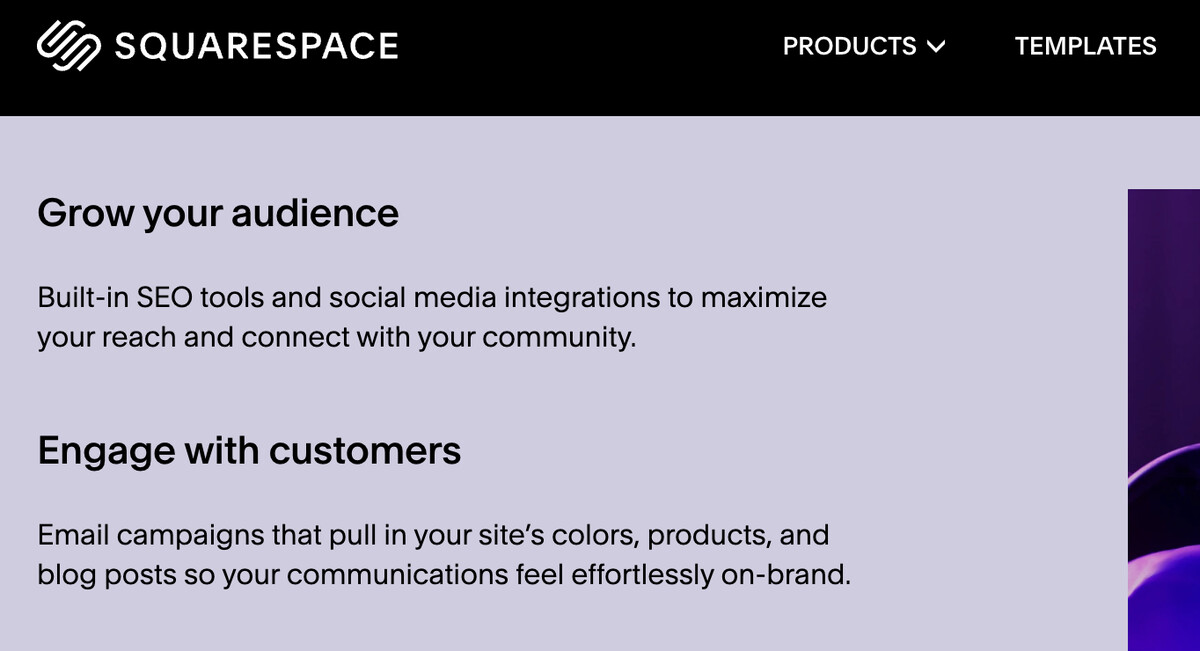
4. Distribution Channels
Content marketing grows on platforms where people actively seek information. Your company blog serves as the main hub page, attracting organic visitors per post. YouTube channels help you reach visual learners. On the other hand, social media platforms extend your reach to new audiences.
Copywriting demands different spaces. Product pages on your website convert visitors into buyers. Sales emails land directly in customer inboxes, achieving high open rates when written well. Google and Facebook ads target people ready to buy, while direct mail and brochures support offline marketing efforts.
5. Success Metrics
Content marketing success is tracked through content engagement metrics.
-
High-performing blog posts attract 1,000+ monthly views at least and keep readers engaged for 3+ minutes.
-
Email subscriber growth shows audience trust—aim for 5-10% list growth monthly.
-
Social shares and backlinks indicate content quality and boost your search rankings.
Copywriting metrics focus on the profit and conversions.
-
Strong landing pages convert 2-5% of visitors into customers. Email campaigns should achieve 3-7% click-through rates.
-
Calculate revenue per email and return on ad spend to measure campaign success.
-
Track cost per acquisition to ensure profitable customer acquisition.
6. Investment And Resources
Content marketing needs consistent investment. Budget $200-500 per piece for quality content creation. You'll need writers who understand SEO, industry experts for technical topics, and time for content promotion.
On the other hand, Copywriting requires different resources. Professional copywriters charge $100-300 per page, but good copy pays for itself through increased sales.
You’ll also have to invest in A/B testing tools to optimize your messages. Analytics tracking helps refine your approach, while conversion optimization ensures maximum ROI from every piece of copy.
Now that you understand the key differences, let's explore when to use each approach for maximum impact.
When To Use Content Marketing (With Examples)
You should use content marketing when your goal is to build long-term relationships with your audience. This approach works best when you need to:
-
Increase Brand Awareness
-
Establish Industry Authority
-
Educate Customers And Build Connection
-
Build Trust Over Time
For example, consider HubSpot's comprehensive marketing guides.
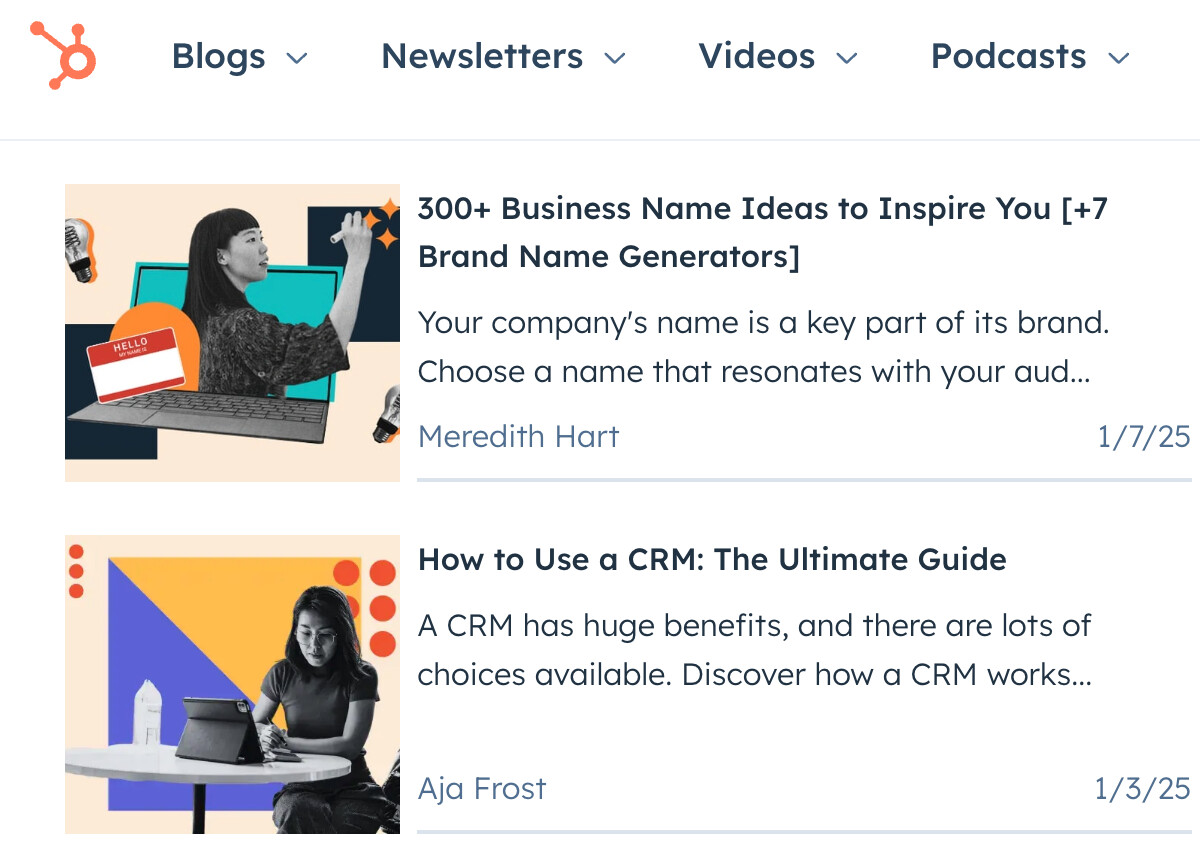
They've created thousands of in-depth articles that help businesses understand digital marketing. These resources attract millions of visitors every single month and position HubSpot as a trusted expert.
Another example is Buffer. They have over 1.4 million organic monthly visitors on their site.

One of the main factors for their growth is their huge library of education blog content that educates their customers and helps them build trust over time.
When To Use Copywriting (With Examples)
Use copywriting when you need to drive immediate action. This approach delivers results when you want to:
-
Increase Sales
-
Increase Conversions
-
Get more leads and subscribers
-
Launch new products or run ads
If you just want to create a landing page and convert your users. And SEO or Social Media Traffic isn’t your main priority, then all you need to focus on is great copywriting.
Similarly, if you focus solely on running ads and getting conversions, then you don’t need to worry about different content marketing strategies. All you need is great copywriting skills to write effective copy that actually converts and generates leads or sales for your business.
The key is to match your content type with your immediate business goals. Use content marketing to build a foundation of trust and authority. Switch to copywriting when you need quick conversions and sales results.
Now, let’s take a quick look at some of the best tips that will help you choose between content marketing and copywriting according to your needs.
How To Choose Between Content Marketing And Copywriting?
Your choice between content marketing and copywriting depends on four key factors. Let's explore each one by one:
1. Your Business Goals
Start with your immediate needs. Do you want to increase brand awareness? Choose content marketing. Need more sales this month? Focus on copywriting.
2. Your Budget
Consider your marketing budget carefully. Content marketing needs a steady investment of $1,000-2,000 monthly for at least 6 months. Copywriting projects often cost less upfront ($500-1,000) but require ongoing testing and optimization.
3. Your Timeline
Look at your content strategy. Content marketing takes 6-12 months to show significant results. If you need results in the next 30-90 days, prioritize copywriting.
The best approach? Start both simultaneously—use copywriting for immediate sales while your content marketing gains traction.
4. Your Resources
Assess your team's capabilities. Content marketing requires consistent content creation, SEO knowledge, and promotion. Copywriting needs strong sales writing skills and A/B testing expertise.
Creating both types of content might seem challenging, but there's a simpler way to handle it all.
The Smart Way To Combine Content Marketing And Copywriting
The most successful businesses don't choose—they combine both approaches strategically. Here's how to do it right:
-
Create valuable content that attracts your target audience.
-
Add strong calls-to-action within your content.
-
Test copywriting messages in your content and improve conversions.
How SEOWriting Makes Both Easier
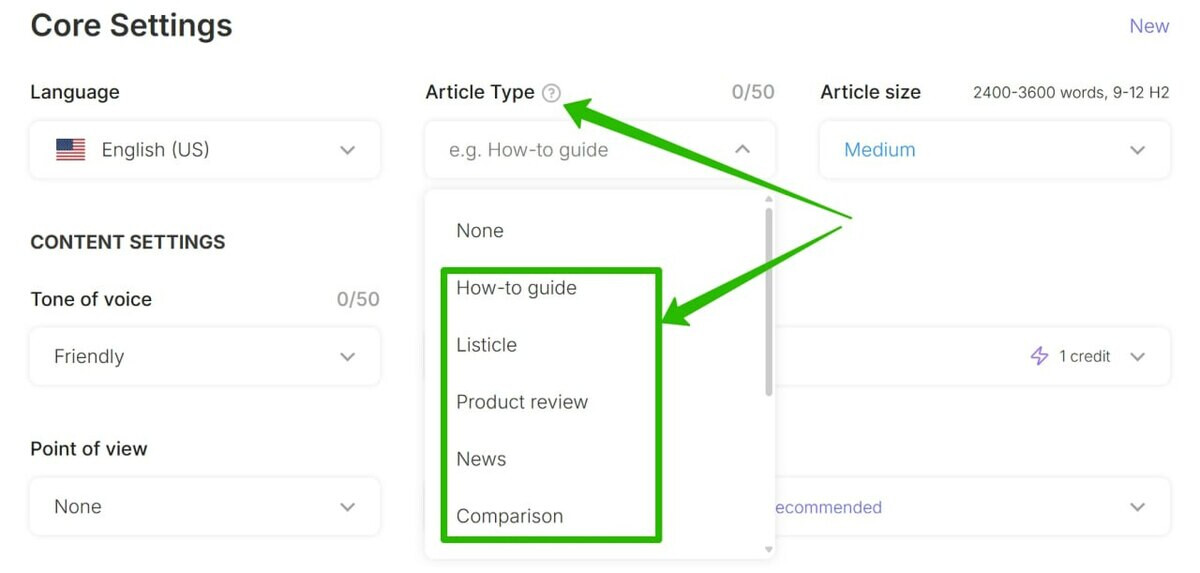
SEOWriting transforms the way you create both types of content. Here's how:
-
One-Click SEO Content: Create optimized blog posts in minutes instead of hours
-
Smart Copywriting Features: Generate compelling calls-to-action and sales copy
-
Multi-Language Support: Reach global audiences in 48 languages
-
WordPress Integration: Publish directly to your website
-
AI Image Generation: Add engaging visuals automatically
The platform helps you maintain consistent quality across both content marketing and copywriting. You can create SEO-optimized blog posts with persuasive elements built in. The result? Higher rankings and better conversion rates without the usual time investment.
Final Thoughts
Content marketing and copywriting both are about creating content and helping brands grow online. But each one needs slightly different resources, skills, budget, and timeline, and also has different goals.
That said, it isn't about choosing one over the other. It's about understanding when to use each approach to achieve your business goals. Both play crucial roles in a complete digital marketing strategy.
Focus on creating valuable content that attracts your target audience, then use strong copywriting to convert them into customers. Track your metrics carefully. Start small, test different approaches, and scale what works for your business.
Ready to create both types of content without all the hassle and huge costs? Get started with SEOWriting for FREE.
FAQs
1. Which Pays Better—Content Marketing Or Copywriting?
Professional copywriters typically earn $50-150 per hour, while content writers earn $35-75 per hour. However, experienced content marketers who understand SEO often earn more through consistent retainer contracts worth $2,000-5,000 monthly.
2. How Long Does It Take To See Results From Each Approach?
Copywriting shows results within 24-72 hours through metrics like sales and conversions. Content marketing takes 6-12 months to build significant traffic, but continues to bring results for years. Most successful businesses see a 25% increase in organic traffic after 6 months of content marketing.
3. Do I Need Different Writers For Content Marketing And Copywriting?
While some writers excel at both, most specialists focus on one area. Content marketing requires research skills, copywriting skills, marketing, and SEO knowledge. Copywriting requires an understanding of psychology and sales expertise.
4. Can I Convert My Existing Content Into Sales Copy?
Yes, but it requires strategic changes. Add clear calls-to-action, benefits-focused messages, and urgency elements to your content. Companies that optimize existing content see a 10-15% increase in conversion rates.
5. Which Approach Costs Less To Start With?
Content marketing has higher upfront costs ($200-500 per piece) but delivers long-term value. Copywriting costs less initially ($100-300 per page) but needs ongoing optimization and testing. Start with copywriting if the budget is tight, then invest in content marketing as sales grow.
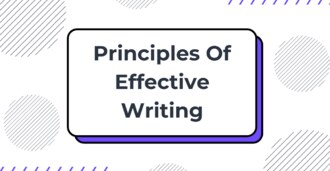


Write 10X Faster With AI-Powered Content
Create SEO-optimized articles in 15 minutes instead of 5 hours. Join 50,000+ content creators who generate content that ranks on top positions on Google. Save up to 80% of your time while getting 2X better results.
Try for Free →
